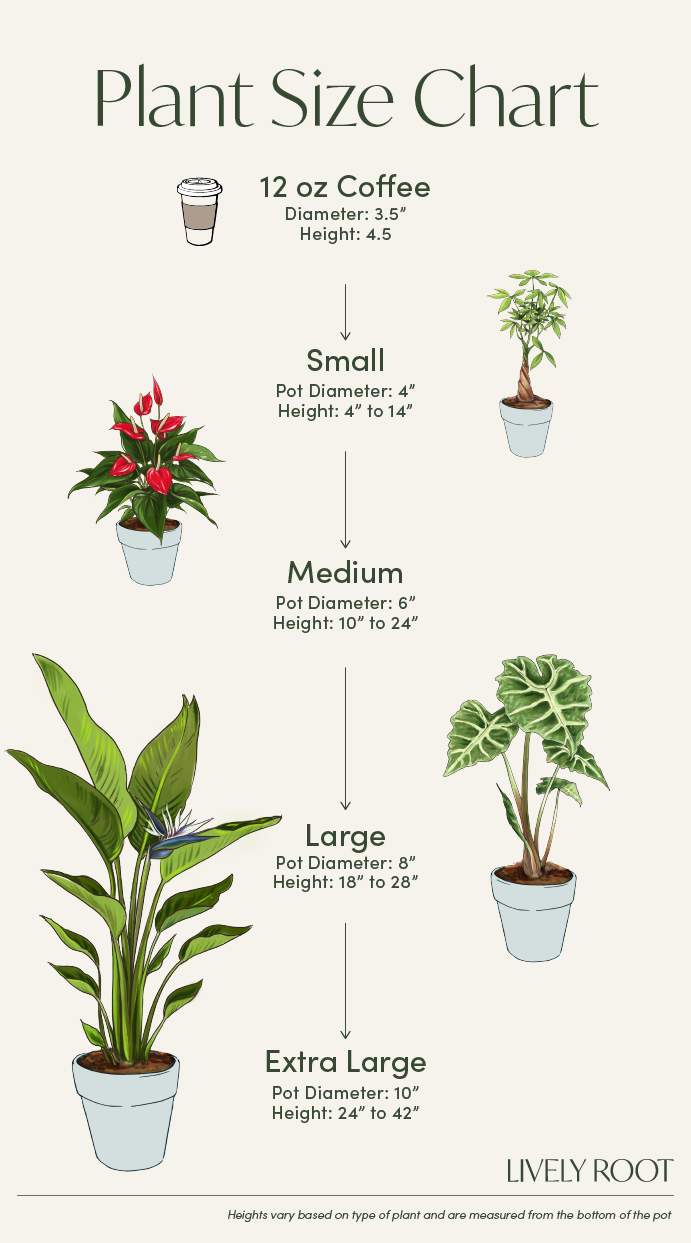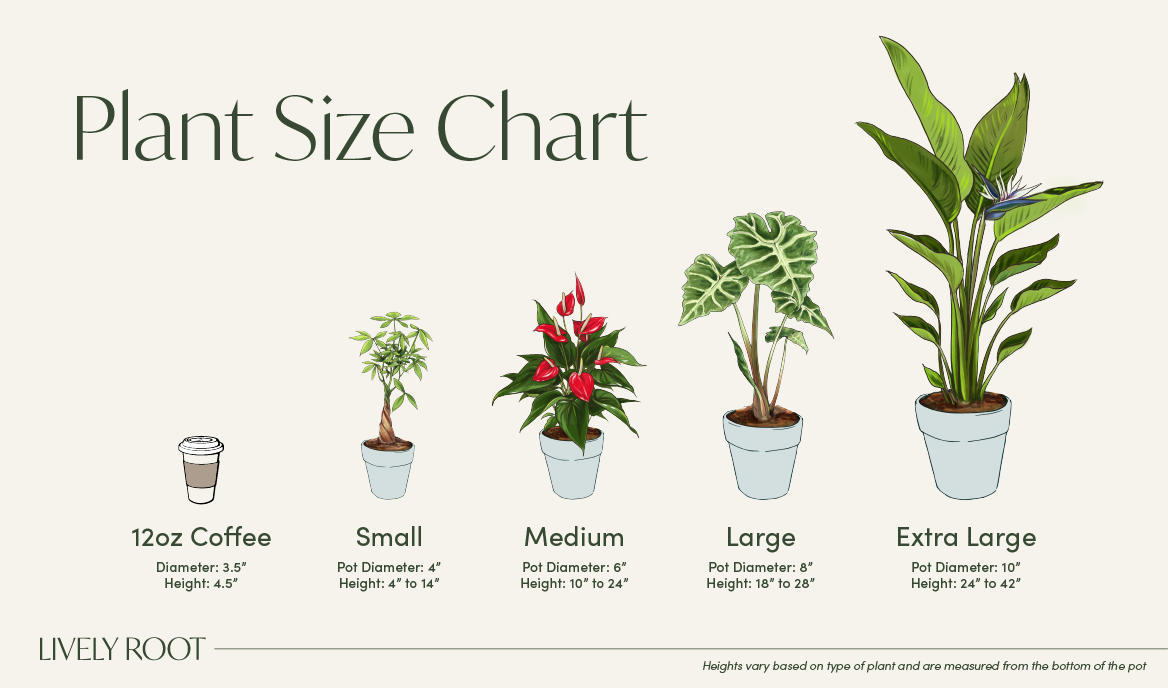

Bring a touch of vibrant greenery to your workspace with the Neanthe Bella Palm, a delightful and adaptable plant perfect for office desks and home countertops. Renowned for its resilience, this palm variety thrives in a range of environments, particularly excelling in low-light conditions, making it a versatile choice for areas that other plants might find challenging.
The Neanthe Bella Palm, also known as the Parlor Palm, is compact and easy to care for, making it ideal for busy spaces or for those new to plant parenting. Its lush, feathery fronds create a soothing and refreshing atmosphere, enhancing any room's aesthetic and improving air quality.
Neanthe Bella Palm Care Guide & Presentation

Prefers medium levels of indirect light.
Water well and then allow the soil to dry out between each watering.
Enjoys humidity. Spritz occasionally.
Keep this plant on the warmer side and avoid cold drafts below 50°F or it could slow their growth.
Outside: Keep them in full shade on a patio out of direct sunlight to prevent leaf burn where nights are above 50°F.
Apply a slow release fertilizer to the soil surface and as you water, the nutrients will release. Replenish as needed. Follow this fertilizing in the spring and summer months and slow down during the fall and winter time.
When receiving the Neanthe Bella Palm, do not repot immediately but wait at least 6-12 months or if the roots are beginning to get crowded and growing through the drainage holes.
Repot in the spring, using a 2 inches bigger pot to give the roots room to spread.
Place a piece of screening at the bottom of the container over the drainage hole to secure the soil and allow to drain. Use a rich, well-draining indoor potting mix amended with 25% compost and to help with fertility.
Water your plant in the old pot before transferring over and let sit an hour.
Add well-draining potting soil amended with perlite and rooting hormone to the bottom to elevate the root ball. Lift the plant and release the roots against the existing planter. Use a clean knife or garden trowel to wedge between the pot and the soil to loosen.
Inspect the root ball. Notice if there are any dead or rotting roots and trim off with sterile pruners. If the plant is rootbound, cut through the roots to alleviate continued encircling.
Ensure the plant is sitting about 1 inch below the edge of the pot to avoid water spillage. Add more soil and backfill around the sides by tamping down. Fill up to the soil line but not over.
Water thoroughly, and if settling occurs, add more soil.
Water well to dampen the soil and let drain.
When watering your palm, it is an excellent time to trim off any browning, yellowing, or discolored leaves. If tips of the leaves are browning, trim the ends off to help the plant regain strength. Remove any debris from the soil and replenish if needed. To clean debris and dust off the leaves:
Place the palm in a shower or tub.
Fill a watering can with a shower spout with filtered, bottled, or water free of chlorine and fluoride.
Shower the leaves, so each one is clear of dust and dirt.
Let the water drain and replace your palm in the decorative container.
To propagate your Neanthe Bella Palm:
Water your plant the night before dividing.
Inspect your plant for overcrowding. If it is root-bound in the pot, loosen the dirt around the root clump and brush away the soil.
Begin to tease and pull apart the mass of roots.
Ensure you have several healthy stalks and leaves attached to the clumps.
Divide each clump into its pot, measuring 2 inches wider than the root mass and deep enough for its roots to grow.
Plant in well draining potting mix amended with rooting hormone. Place the plant at the same level as the previous pot adding soil at the bottom. Water the soil and add more if settling occurs. Set it in medium, indirect sunlight.
Check the moisture and humidity each day and add misting to keep the soil moist while the roots establish. After 6-8 weeks, roots will begin to develop. You can tug onto the stem to ensure the roots are anchoring well.
Keep the air humid around it with a pebble tray and misting.
Some die off of stems may occur from transplant shock. If this happens, cut the branches away and continue to hydrate, and keep the humidity level at a medium level while it recovers. Adding a rooting hormone during planting will help diminish the symptoms of transplant shock.
Neanthe Bella Palm: Overview
The Neanthe Bella Palm (Chamaedorea elegans), one of the most popular indoor palm trees, has dense, lush green fronds growing on arched, cane-like stems. It also produces clusters of tiny yellow flowers on long, branched stems. The Parlor Palm, a common name for the Neanthe Bella Palm, is compact, reaching about 2 ft. tall indoors or a maximum of 6 ft. tall when grown outdoors.
Native to Mexico and Guatemala, this tropical plant grows well in hardiness zones 10-12. Part of the Arecaceae family, which also includes the Coconut Palm and the Date Palm, the Neanthe Bella is a relatively slow grower, living for several decades and reaching maturity after 1-2 years. Not as sun-loving as some other palm trees, the Chamaedorea Palm thrives in medium indirect light and can even tolerate low-light conditions. It’s an easy-care plant that is also non-toxic for pets.
In Feng Shui, the Neanthe Bella Palm is a good-luck plant associated with growth, peace, and resilience.
Other exotic palm trees, Lively Root offers, include the sturdy Pygmy Date Palm and the quirky Ponytail Palm Tree.
Neanthe Bella Palm (Chamaedorea Elegans): Alternative Names
- Parlor Palm
- Bamboo Palm
- Good Luck Palm
- Victorian Parlor Palm
Neanthe Bella Palm (Parlor Palm): Benefits
- With elegant tropical foliage
- Excellent indoor air purifier
- Considered a lucky plant in Feng Shui
- Easy to care for plant, suitable for people with busy schedules
- Drought-tolerant and adapts well to low-light
- Pet-friendly palm
Neanthe Bella Palm: Care Guide
Neanthe Bella Palm care is easy and rewarding. This large plant can grow both indoors and outdoors in warmer climates. Here are some top tips for proper Neanthe Bella Palm indoor care:
Watering and Humidity
Knowing how to care for a Parlor Palm includes determining how much water it needs. Neanthe Bella Palms prefer interchanging periods of moist and dry soil conditions. Water your palm well, and then let the water drain. Then, wait for the soil to dry thoroughly before watering again.
Your Neanthe Bella Palm plant will appreciate some additional humidity that you can provide by misting it occasionally or placing your palm’s pot on a pebble tray.
Light and Temperature
One of the Chamaedorea Elegans benefits is that this palm is very flexible, growing well even in low light. You can meet your Parlor Palm light requirements with medium indirect light and protection from direct sun rays. Keep it in partial shade if you’re growing it as a porch plant,
The Palm Neanthe Bella thrives in warmer temperatures between 68℉ and 80℉. Please protect it from cold drafts, which can stunt its growth, and bring your palm indoors when night temperatures drop below 50°F.
Soil, Feeding, and Repotting
For the best Chamaedorea elegans care, use well-draining, nutrient-rich soil mixed with some perlite for enhanced drainage. Feed your Neanthe Bella Palm with a slow-release fertilizer during spring and summer. Stop fertilizing in winter when your plant is in its dormant phase.
Parlor Palms prefer to be slightly rootbound, so don’t repot immediately. Please wait until you see roots growing from the pot’s drainage holes, then repot it in a 2-inch larger container.
Propagation
You can propagate a large Neanthe Bella Palm via division. Slowly and carefully tease the root clump apart until you get several separate sections. Each new plant should have several stalks with healthy leaves attached and a healthy root system. Transplant your new palm trees into pots filled with well-draining soil and water well, misting occasionally to keep the humidity high.
Pruning, Cleaning, and Common Issues
Depending on the size of your Neanthe Bella, you may need to trim some fronds to keep it looking neat and compact. You mostly only need to prune dry or damaged leaves. Clean the dust off your palm’s leaves by placing them in a sink or bathtub and giving them a shower.
Some Parlor Palm problems to watch out for are browning leaf tips due to underwatering or low humidity, overwatering (signaled by yellowing leaves and an unpleasant smell from the soil), and pests, like mealybugs, spider mites, or scale insects.
Neanthe Bella: Placement, Companion & Alternative Plants
The elegant, feathery foliage of the Neanthe Bella Palm will add a lush, tropical flair to your interior or porch, making it a popular statement plant in various settings.
Best Locations & Uses
- Perfect palm for plant lovers with pets
- Ideal for beginner indoor gardeners
- Great easy-care office or bedroom plant
- Wonderful, mood-lifting gift plant
- It is a lovely plant for partially shaded porches in warmer climates
Companion Plants
Placing your Chamaedorea Neanthe Bella together with other plants will not only create a visually stunning display but also help with raising humidity around your plants.
- Split Leaf Philodendron (Monstera deliciosa): The low-maintenance, air-filtering Split Leaf Philodendron boasts uniquely fenestrated leaves that add to the aesthetics of your indoor greenery.
- English Ivy Plant (Hedera helix): Suitable for low-light spaces, the English Ivy is the ideal hanging plant with beautiful trailing stems embellished by glossy, dark green leaves.
- Marble Queen Pothos (Epipremnum aureum 'Marble Queen'): A striking, speckled variety, the cascading Marble Queen Pothos is easy to grow and amazingly adaptable.
Alternative Plants
If you’re looking for a larger indoor palm tree, here are some beautifully tropical choices to consider:
- Areca Palm Indoor Tree (Dypsis lutescens): The beautiful Areca Palm has elegantly arched fronds growing from the base of the plant, visually resembling bamboo, that eventually can reach an impressive 10 ft. in height.
- Cat Palm (Chamaedorea cataractarum): Pet-friendly and easy to care for, the humidity-loving Cat Palm is the perfect tropical palm with abundant, lush, dark green foliage.
- Lady Palm (Rhapis excelsa): A perfect indoor and outdoor palm, the Lady Palm has large, sophisticated, fan-like fronds and enjoys medium humidity and plenty of bright, indirect light.
Make Our Neanthe Bella Palm a Statement Plant in Your Home
Get the elegant Parlor Palm for sale to bring a relaxed, exotic atmosphere into your office or living space!


























































































